The 10 Coolest Smartphones Of 2008
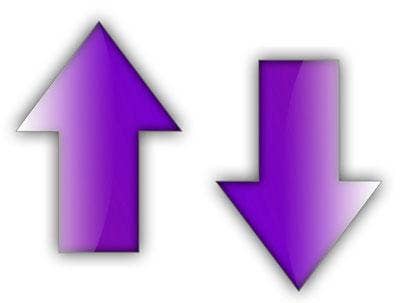
2008 was a killer year for the smartphone, an iPhone-killer year, that is. Device makers a-plenty rolled out their latest and greatest, packing in not only myriad corporate functions, but also a host of consumer-aimed multimedia features. Steve Jobs birthed a new darling in the Apple iPhone 3G, and a host of potential iPhone killers and iPhone clones sought to unseat it from smartphone dominance. Research In Motion joined the battle of the touch-screen titans, and the first smartphone based on the open-source Google Android operating system saw its debut with the HTC-built T-Mobile G1.
Elsewhere, device makers took charge, packing portable devices with enough capabilities to make them pocket-size PCs (or Macs, in the iPhone's case).
Here we take a look at the device landscape from 2008 and, while a difficult task, we pick the 10 coolest smartphones to hit the market this year. This list is not based on just features and functions, but also the coolness factor associated with these devices.
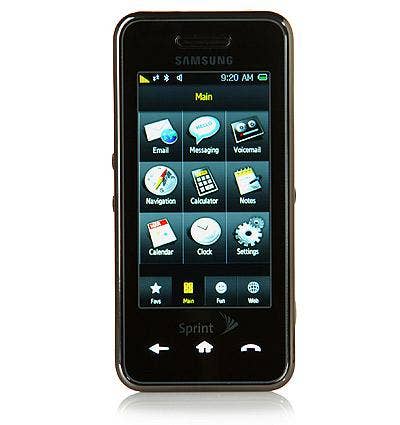
Released in June, and announced at the CTIA Wireless show just months before, the Samsung Instinct took the touch-screen smartphone arena by storm, taking direct jabs at Steve Jobs and his Apple iPhone.
The Instinct, which runs on Sprint's network, ties in functions like visual voice-mail, corporate and consumer POP3 e-mail and multimedia capabilities that let users play music while surfing the mobile Web, texting or playing games. The Instinct comes to the table with a 2.0 megapixel camera with video recording, expandable microSD memory of 8 GB, GPS, live TV, Bluetooth capabilities, an integrated world clock, SMS voice and text messaging, picture caller ID and Sprint Mobile Sync.
The Instinct measures 2.17 x 4.57 x 0.49 inches and weighs in at 4.5 ounces, and runs about $130 with a contract and rebates. The Instinct was a hot seller, beating Sprint's expectations and sparking worries of a Samsung Instinct shortage.
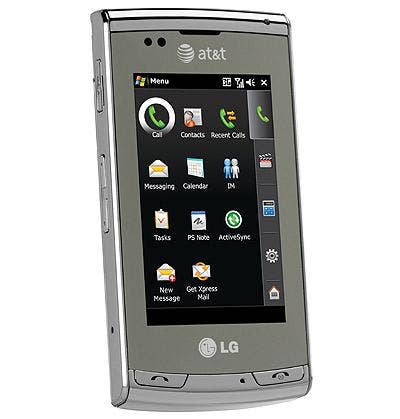
LG Electronics pulled no punches with its first-ever smartphone for the U.S. market, the LG Incite, a slick handheld that runs on Microsoft Windows Mobile 6.1 Professional. The 3G smartphone -- on AT&T's network -- packs in GPS, Wi-Fi and Bluetooth 2.0, while also offering access to Microsoft Office Mobile and Microsoft ActiveSync 4.5. On the multimedia side, the Incite includes Windows Media Player 10.
The Incite also ties in a 3-inch touch-screen, a 3.0 megapixel camera with video recording, a full QWERTY keyboard and a 20-key keyboard depending on if you're using landscape or portrait mode. It includes AT&T Navigator for turn-by-turn voice and on-screen directions and access to a host of business and personal e-mail accounts. The Incite also packs in up to 16 GB of memory with a microSD port.
The LG Incite runs about $200 with a contract and rebates.
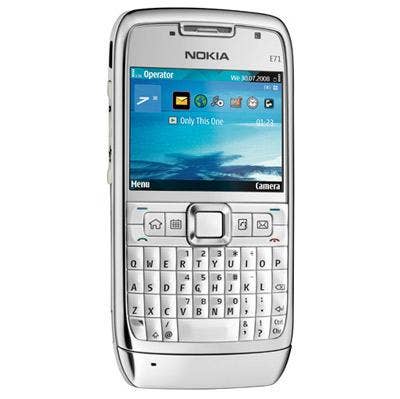
Back in June, Nokia -- the world's largest smartphone maker -- unveiled its all grown-up E-series, putting the E71 into the smartphone mix. The handheld features a full QWERTY keyboard in a stainless steel case. The 2.36-inch color display and the keyboard make the E71 a one-handed or two-handed device.
What makes the Nokia E71 a true business device is its e-mail support, offering up Microsoft Exchange, among others. It also features a built-in mobile VPN and data encryption for both the handheld's memory and memory cards. The smartphone runs the Nokia S60 Symbian OS and offers 110 MB of internal memory and support for up to 8 GB of external memory. Talk time can reach 10.5 hours on a GSM network and 4.5 hours on WCDMA.
And to prove that it's not all business, the Nokia E71 features a 3.2-megapixel camera with auto-focus and flash, along with a music player. An unlocked Nokia E71 will run around $400, but can be bought cheaper with a specific carrier contract.
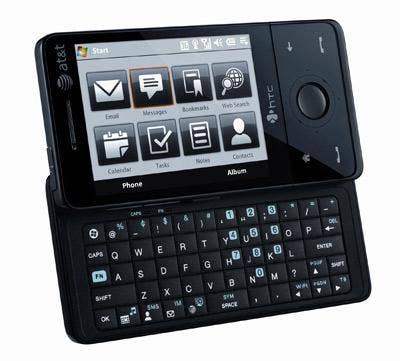
The HTC Fuze, AT&T's 3G version of the HTC Touch Pro, followed a successful year for HTC, which also built and designed the T-Mobile G1 and released its own HTC Touch Diamond.
The touch-screen Fuze features a full slide-out QWERTY keyboard and uses HTC's TouchFLO 3-D user interface for one-touch access. It's designed for one-hand operation, using gesture-based navigation, meaning users can touch, hold and slide along the screen tabs. It ties in an Opera Web browser with zooming. The HTC Fuze runs Microsoft Windows Mobile 6.1 Professional, enabling integration with Microsoft Outlook e-mail, contacts, calendar and to-do lists. Windows Mobile lets users access and edit e-mail attachments using mobile versions of Microsoft Word, Excel, OneNote and PowerPoint. Additionally, the Fuze supports industry-specific applications and Microsoft System Center Mobile Device manager, a mobile device management solution that also provides security, mobile VPN and software distribution for Windows Mobile devices.
The Fuze tosses in a 3.2-megapixel camera and AT&T Video Share for good measure, while also building in push-to-talk, GPS, Wi-Fi and Bluetooth 2.0. It hosts a 262,000-color, 2.8-inch, 480-by-640 VGA touch screen for touch-sensitive navigation control, with three-dimensional animated transitions. Multimedia users can access AT&T Mobile Music services, which includes access to content from eMusic, XM Radio Mobile and others. It also offers access to video clips like news, sports, weather, entertainment, HBO mobile and more via streaming video. For full-length streaming video, users can access MobiTV. The HTC Fuze runs about $300 with a contract.
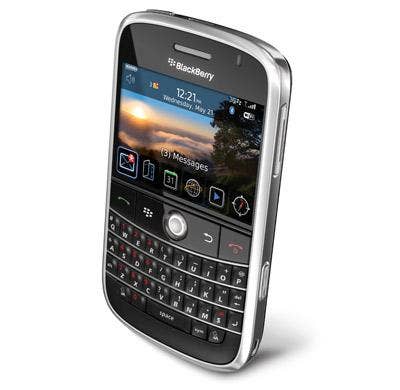
Countless delays and additional network testing held up Research In Motion's (RIM) U.S. release of the BlackBerry Bold 9000, making it one of the most-coveted smartphones in BlackBerry's 10-year history. The BlackBerry Bold, the first 3G device from RIM, was originally announced in May, but the Bold didn't hit stores until November.
The Bold starts at about $300 with a contract from AT&T -- its exclusive U.S. carrier. The high-end smartphone sent shockwaves through the market with its host of features. It offers standard BlackBerry functions like e-mail, messaging, organizer and browser, but also features a lustrous black exterior, satin chrome-finished frame and a leatherette back plate. The Bold also offers a half-VGA color display, 480 x 320 at 217 ppi, and a full QWERTY keypad for typing. In addition, the Bold offers built-in GPS and Wi-Fi, a 624MHz mobile processor and 1 GB of onboard storage with up to 16 GB available via microSD/SDHC expansion. In addition, the Bold offers a host of rich multimedia capabilities including a media player for music, video and photos; a 2-megapixel camera with built-in flash, zoom and video recording; and an optimized Web browser.
And its ties with AT&T enable it to offer a host of other services including simultaneous voice and data capabilities, AT&T Navigator Global Addition, seamless Wi-Fi, cellular video and AT&T mobile music services. The Bold also features include Bluetooth 2.0 support, BlackBerry Desktop Manager, voice-activated dialing, speaker-independent voice recognition and a host of other functions.
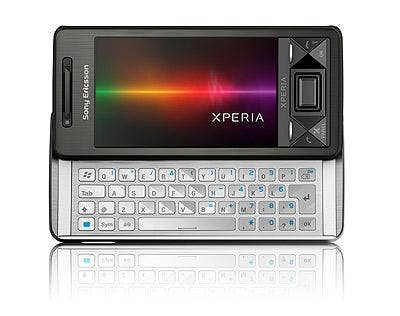
This one's kind of a cheat, since so far it's only available in Europe. But the Sony Ericsson Xperia X1 was originally supposed to hit stateside in November. Unknown delays have pushed it to January 2009. Still, since it made landfall in Europe in September and has been one of the most-hyped devices since it was announced in February -- so much so that there's talk of it becoming Sony Ericsson's flagship handheld -- it would be remiss of us to not include it on the best of 2008 list.
The $800 price tag for an unlocked model may be a deterrent for some, but the Xperia X1 delivers a range of multimedia and communication functions that will appeal to the suit and tie corporate set along with the casual smartphone consumer.
The Xperia X1 features a "panel user interface," which offers up to nine panels on the home screen for a customized experience. It runs on Windows Mobile 6.1 Professional and wraps in a 3-inch wide 800 by 480 VGA touch-screen display and a full QWERTY keyboard. The 3G smartphone offers audio and video streaming, high-speed Web surfing, multimedia messaging and e-mail. It also supports Wi-Fi, aGPS, Bluetooth and features a 3.2-megapixel camera, video streaming, video playback, video recording and a music player, along with dozens of other advanced features and functions.
The Xperia X1, when it actually does hit stateside, is sure to cause a stir.
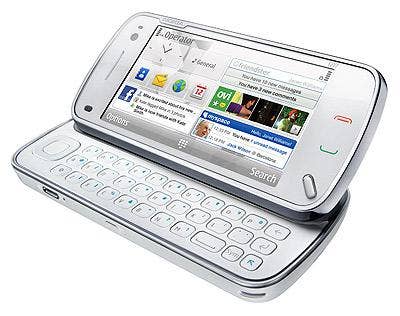
A little late to the game, but in early December Nokia dropped the Nokia N97, which Nokia is billing as the world's most advanced mobile computer, just in smartphone form.
The N97 offers a 3.5-inch tilting touch-screen along with a full QWERTY keyboard, aGPS, standalone GPS, 3G capabilities, Wi-Fi and a 5-megapixel camera. The N97 is Nokia's direct stab at the iPhone. It offers built-in social location capabilities through an enhanced Symbian operating system, version 5 of the S60. It offers a quick contacts bar and customizable widgets. The smartphone also comes with the ability to stream Flash videos, something most smartphones lack.
The N97 offers up to 48 GB of storage, with 32 GB of on-board memory. While Finland's Nokia has yet to bring the N97 to the U.S., it's hit Europe and Asia. The only drawback is the price, which will run just under $700 for an unsubsidized handset.
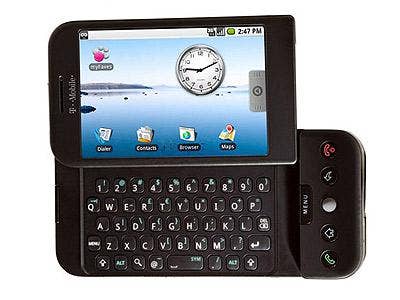
The T-Mobile G1 took the smartphone market by storm when it hit stores in October. The HTC-built smartphone was the first device built on Google Android, the open-source operating system. The touch screen, which features a full slide-out QWERTY keyboard, offers 3G support, GPS, Wi-Fi and a host of other features and functions that had the iPhone faithful considering an alternative.
The G1 offers a 3-megapixel camera, access to Amazon's MP3 Store, GoogleMaps, a WebKit browser and support for push Gmail e-mail and integration with other POP3 and IMAP e-mail services. The G1 also offers a host of instant messaging options.
The G1 also features access to the Android Market, which lets users download -- for free in most cases -- applications for everything from sports and entertainment to other lifestyle applications. The G1's big draw was that it marked the inaugural Android device to hit stores. The price also played in its favor, hitting about $180 with a contract.
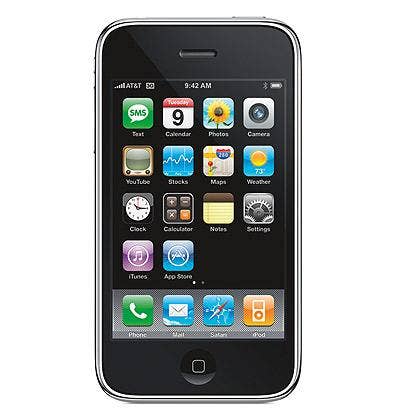
Probably the most noteworthy smartphone release of 2008 was the Apple iPhone 3G, the second-generation iPhone that caused a ruckus when it was released in July. The 3G handheld built upon the iPhone's now-iconic legacy, tying in support for AT&T's high-speed 3G network.
The iPhone 3G, which comes in 8 GB and 16 GB models, is the touch screen of all touch screens, featuring a 2-megapixel camera, e-mail support for IMAP and POP services, Wi-Fi, GPS and a Safari browser.
For many, the iPhone's draw is the display, a 3.5-inch widescreen touch screen with 480 x 320 resolution. The display features multitouch and pinch capabilities to ease navigation and selection. The iPhone 3G is also a multimedia titan that offers support for nearly every video and audio format known to man and integration with the iTunes music store.
It also offers access to Apple's App Store, a marketplace where developers can build and sell apps for users to download, for a fee, to their devices. The smartphone also lets users view a host of document formats, including the Microsoft Office suite.
The Apple iPhone 3G clocks in at 4.5 by 2.4 by 0.48 inches and runs $199 for the 8 GB model and $299 for the 16 GB model.
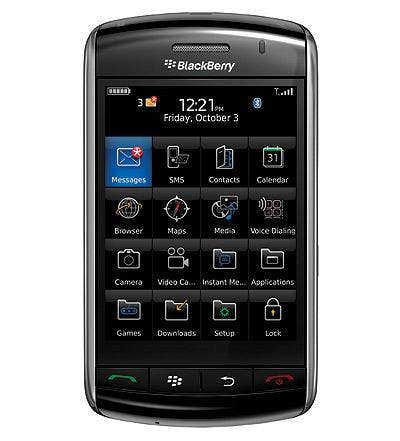
When it comes down to smartphone slickness in 2008, none outshined the BlackBerry Storm, RIM's first-ever touch-screen device and BlackBerry's official attempt at dethroning the iPhone. The Storm has it all -- well, except for Wi-Fi, but it makes up for that in other areas. Not only is the Storm cool as all get-out, it packs in enough features and functions to wow the corporate and consumer sectors all in one fell swoop.
The Storm officially hit stores in November, though for most of 2008 rumors and hype swirled about BlackBerry's touch-screen answer to the iPhone. And the day the Storm was released, users were not disappointed.
The Storm boasts all of the BlackBerry functionality users have come to love -- e-mail, messaging, calendaring and more, along with the multimedia functionality they have come to expect, like GPS, video and music.
The Storm also features a 3.2-megapixel camera with zoom, flash and video-recording capabilities. And the Storm's 'clickable' touch-screen, which makes an audible clicking sound and depresses slightly as users type on the touch-sensitive display, is a key differentiator.
The Storm, which runs on Verizon Wireless' 3G network, costs about $200 with a contract and rebates.